GENERAL DATA
Plant Parts: Fungus
Cultivation Mode: Wild Collection
In Manufacturing: Pharmaceutical, oil
In Food: Sauces, Soups, Salads, Fast food, Stew, Italian food
🌿 Industries That Use Black Truffle (Tuber melanosporum Vittad.)
Black Truffle, also known as Périgord truffle, is an underground fungus with a unique aroma and intense flavor, highly prized in gourmet cuisine and specialized food industries. Native to Southern Europe, it grows symbiotically with the roots of oak and hazelnut trees. This delicacy is wild-harvested or cultivated in truffle orchards, primarily in France, Italy, and increasingly in Iran, Spain, and Australia.
1. Gourmet Food & Culinary Industry
The primary industry for Black Truffles, where it is used to enhance luxury foods with its distinctive earthy and musky aroma.
-
Culinary applications:
-
Shaved raw over pasta, risotto, eggs, or foie gras
-
Infused in oils, sauces, butter, and cheese
-
Featured in gourmet condiments like truffle salt or truffle honey
-
-
Forms used:
-
Fresh truffles (whole or sliced)
-
Frozen or preserved (in brine or oil)
-
Truffle essence or flavoring
-
✅ Valued for its volatile aromatic compounds such as dimethyl sulfide, responsible for its pungent umami scent.
2. Fine Food Processing & Specialty Ingredient Industry
Used as a flavor enhancer or luxury ingredient in:
-
High-end processed foods:
-
Truffle pasta, gourmet potato chips, truffle mayonnaise
-
Artisan truffle oils (often with synthetic or mixed essence)
-
-
Truffle-based flavorings:
-
Natural and synthetic aromas
-
Used in molecular gastronomy and flavor science
-
✅ Also found in encapsulated flavor beads or emulsions for gourmet ready-to-eat products.
3. Nutraceutical & Functional Food Industry
Emerging research explores the antioxidant and anti-inflammatory potential of truffle compounds, including phenolics and polysaccharides.
-
Claimed functional uses:
-
Immune-modulating properties
-
Antimicrobial effects
-
Natural aphrodisiac qualities
-
✅ Still limited in mainstream supplements due to high cost, but truffle extracts and powders are used in premium blends.
4. Luxury & Aromatherapy Industry
The unique volatile compounds of truffles are now being studied for neurosensory stimulation and wellness.
-
Included in:
-
High-end niche perfumes (earthy/musky notes)
-
Luxury candles and oils with truffle scent
-
Mood-enhancing diffusers
-
✅ Associated with hedonistic and sensual aroma profiles.
5. Export & Gourmet Trade Markets
Black Truffle is a high-value item in international trade.
-
Exported as:
-
Fresh or frozen whole truffles (graded A, B, Extra)
-
Canned or jarred in truffle juice or brine
-
Premium truffle-based condiments or truffle flakes
-
✅ Iran is becoming a rising player in truffle exports, especially to Gulf countries and Europe.
6. Agricultural & Mycorrhizal Cultivation Industry
The truffle farming industry is growing through inoculated trees and orchards.
-
Involves:
-
Oak and hazelnut trees inoculated with Tuber melanosporum
-
Cultivation in semi-arid or Mediterranean climates
-
✅ Truffle farming has become a long-term agro-investment in France, Spain, Iran, and Australia.
✅ Summary of Key Applications
| Industry | Common Uses |
|---|---|
| Gourmet & Culinary | Shaved over foods, sauces, truffle oil, butter, cheese |
| Fine Food Processing | Truffle chips, infused condiments, synthetic truffle aroma |
| Nutraceutical & Functional Food | Truffle powder, antioxidant blends, aphrodisiac claims |
| Luxury Fragrance & Aromatherapy | Earthy perfume notes, candles, diffusers |
| Export & Gourmet Trade | Fresh/frozen truffles, truffle juice, premium condiment kits |
| Agricultural & Mycorrhizal | Inoculated orchards, truffle agro-enterprises |
🌱 Key Features of Black Truffle
-
Botanical name: Tuber melanosporum Vittad.
-
Common names: Périgord truffle, French Black Truffle, Winter Black Truffle
-
Harvest season: Winter (Nov–Mar, depending on location)
-
Aroma: Rich, earthy, musky, slightly chocolatey
-
Main aroma compound: Dimethyl sulfide
-
Typical habitats: Oak and hazelnut forests (temperate zones)
-
Forms: Fresh, frozen, dried slices, canned, infused
🌿 Industries That Use Summer Truffle (Tuber aestivum Vittad.)
Summer Truffle, also known as Scorzone, is a prized subterranean fungus with a more delicate aroma and milder flavor compared to the Black Winter Truffle (Tuber melanosporum). It is widely used in the gourmet food and ingredient industry and harvested primarily in Southern and Central Europe, including Italy, France, Spain, and recently in parts of Iran and Turkey.
1. Gourmet Food & Culinary Industry
Summer truffles are used as a seasonal delicacy in European and Mediterranean cuisines.
-
Culinary Applications:
-
Shaved raw or lightly cooked in risottos, pasta, meat dishes, and eggs
-
Used to finish gourmet dishes with a subtle earthy note
-
Infused in oils, creams, butter, and cheese
-
-
Forms Used:
-
Fresh truffles (whole or grated)
-
Preserved in brine or truffle juice
-
Freeze-dried slices or flakes
-
✅ Offers milder flavor than Tuber melanosporum, making it more affordable and versatile in restaurants and retail.
2. Fine Food Processing & Specialty Ingredients
A popular natural flavoring agent in high-end packaged products.
-
Incorporated into:
-
Truffle-infused oils and sauces
-
Flavored gourmet chips, aioli, and cream sauces
-
Artisan pasta and pre-packaged risotto kits
-
✅ Often blended with synthetic truffle flavoring for stronger aroma in processed foods.
3. Export & Gourmet Retail Industry
A significant export product in the European and Middle Eastern gourmet market.
-
Exported as:
-
Fresh or vacuum-sealed truffles
-
Jarred or canned truffle slices and whole pieces
-
Freeze-dried or powdered truffle additives
-
✅ Its longer harvest season and wider availability make it a stable export product for truffle traders and specialty stores.
4. Fragrance, Aromatics & Sensory Industry
Though milder than winter truffles, Tuber aestivum still carries pleasant volatile aromatic compounds, used in:
-
High-end culinary fragrance research
-
Natural aroma testing
-
Earthy/mild musky perfume blends or kitchen ambiance sprays
✅ Not a primary industry, but gaining interest in sensory science and truffle branding.
5. Truffle Cultivation & Agri-Investment Industry
Summer truffles are widely used in truffle orchard projects due to their ease of cultivation.
-
Cultivation involves:
-
Inoculated oak, hazel, and hornbeam trees
-
Semi-temperate or Mediterranean climates
-
Relatively faster yields than winter truffles
-
✅ Popular among small-scale truffle farmers in Iran, Turkey, and southern Europe.
✅ Summary of Key Applications
| Industry | Common Uses |
|---|---|
| Gourmet & Culinary | Shaved raw, cooked in pasta/risotto, infused oils and butter |
| Food Processing & Flavorings | Truffle-flavored snacks, sauces, cream products |
| Export & Gourmet Retail | Fresh, frozen, jarred, freeze-dried slices |
| Aromatics & Sensory Research | Mild truffle aroma in culinary scent studies and natural perfumes |
| Truffle Cultivation | Orchard farming with inoculated trees, agro-investment projects |
🌱 Key Features of Summer Truffle
-
Botanical name: Tuber aestivum Vittad.
-
Common names: Scorzone, Summer Black Truffle
-
Aroma: Nutty, mushroomy, slightly earthy (less intense than winter truffle)
-
Color: Black-brown exterior with beige-to-light-brown marbling inside
-
Harvest season: Late spring to early autumn (May–September)
-
Typical habitats: Symbiotic with oak, beech, hazel, and hornbeam
-
Forms: Fresh, frozen, brined, dried slices, or powder
🌿 Industries That Use White Truffle (Tuber magnatum)
White Truffle, often referred to as Alba Truffle, is a rare subterranean fungus famous for its intense aroma, delicate flavor, and extremely high market value. Native to parts of Italy (especially Piedmont and Tuscany) and Eastern Europe, this truffle species is harvested in autumn and used almost exclusively in luxury gastronomy.
1. Fine Dining & Gourmet Culinary Industry
White truffles are considered the “diamond of the kitchen”, used in exclusive restaurants and Michelin-starred cuisines.
-
Culinary Applications:
-
Shaved fresh over risotto, pasta, eggs, mashed potatoes, or carpaccio
-
Never cooked, only used raw to preserve their aroma
-
Added just before serving as a finishing luxury ingredient
-
-
Serving Style:
-
Typically sliced into paper-thin shavings
-
Paired with mild-flavored dishes to highlight the truffle’s character
-
✅ Delicate and volatile aroma that dissipates quickly, requiring immediate use.
2. Luxury Food & Ingredient Processing
Although rarely processed due to its sensitivity, white truffle is occasionally infused into high-end gourmet products.
-
Used in:
-
Truffle oil (with synthetic flavor due to volatility of real aroma)
-
Gourmet sauces and creams
-
High-end truffle butter and cheese
-
✅ Only trace amounts used—true white truffle-infused products are rare and expensive.
3. Export & Truffle Trade Market
White truffle is one of the most expensive fungi in the global trade, sold in gourmet markets and auctions.
-
Export Forms:
-
Fresh whole truffles (air-shipped within 48 hours)
-
Vacuum-sealed or lightly brushed
-
Rarely processed—value lies in freshness
-
-
Pricing (as of recent years):
-
Average price: €3,000 to €7,000 per kg
-
Auction record: Over €100,000 for large specimens
-
✅ High-end markets: Italy, Japan, UAE, USA, France, China
4. Luxury Events, Tourism & Gastronomy Festivals
White truffle has cultural and economic significance in regions like Alba (Italy), where truffle festivals attract chefs and collectors worldwide.
-
Includes:
-
Truffle hunting experiences
-
Culinary tourism packages
-
Auction and showcase events
-
✅ Boosts local tourism, heritage, and luxury food branding
5. Scientific & Aroma Research
Due to its complex volatile compounds, white truffle is studied in:
-
Food aroma profiling
-
Fungal genetics and microbiota
-
Artificial flavor reproduction
✅ Key focus: identifying sulfur-based aromatic molecules
✅ Summary of Key Applications
| Industry | Common Uses |
|---|---|
| Fine Dining & Culinary | Raw shaving on pasta, risotto, egg dishes, premium ingredients |
| Luxury Food Processing | Rarely used in sauces, oils, butter (minimal quantity due to cost) |
| Export & Gourmet Retail | High-end fresh truffle trade, gourmet markets, auctions |
| Culinary Tourism & Events | Truffle festivals, regional cuisine, gastronomy promotion |
| Scientific Research | Aroma analysis, fungal studies, synthetic flavor development |
🌱 Key Features of White Truffle
-
Botanical name: Tuber magnatum Pico
-
Common names: Alba Truffle, White Truffle of Italy
-
Color: Pale cream to yellow-ochre with white marbling
-
Aroma: Powerful, garlicky-cheesy-earthy, sulfurous and intoxicating
-
Flavor: Delicate yet deep, cannot withstand heat
-
Harvest season: September to December
-
Natural habitat: Symbiotic with oak, poplar, willow, and hazelnut
-
Regions: Italy (Alba, Tuscany), Croatia, Slovenia, Serbia
-
Forms available: Only fresh—rarely dried or preserved
🍄 Comparison Table: White Truffle vs Black Winter Truffle vs Summer Truffle
| Feature | White Truffle(Tuber magnatum) | Black Winter Truffle(Tuber melanosporum) | Summer Truffle(Tuber aestivum) |
|---|---|---|---|
| Common Name | Alba Truffle, Italian White Truffle | Périgord Truffle, True Black Truffle | Scorzone, Black Summer Truffle |
| Season | Autumn (Sept–Dec) | Winter (Nov–Mar) | Late Spring–Early Autumn (May–Sept) |
| Color (Exterior) | Pale yellow to ochre | Black to dark brown with fine polygonal warts | Dark brown to black with large pyramidal warts |
| Color (Flesh) | Cream to light brown with white marbling | Dark brown to black with dense white marbling | Beige to light brown with fine white marbling |
| Aroma | Strong, garlicky, cheesy, earthy, sulfurous | Deep, musky, chocolatey, earthy | Mild, nutty, mushroom-like |
| Flavor | Delicate but intense, cannot be cooked | Robust, rich, withstands light cooking | Subtle, woody, fades quickly with heat |
| Culinary Use | Shaved raw over mild dishes (pasta, risotto, eggs) | Used in sauces, oils, warm dishes | Often used fresh or preserved in accessible gourmet dishes |
| Cooking Sensitivity | Heat destroys aroma – used only raw | Can tolerate mild cooking | Mild flavor; cooking reduces its impact |
| Rarity | Very rare | Moderately rare | More widely available |
| Harvest Method | Trained dogs (or pigs rarely) | Same | Same |
| Main Regions | Italy (Alba, Tuscany), Croatia, Balkans | France (Périgord), Italy, Spain | Italy, Spain, Turkey, Iran |
| Price (per kg) | 💎 €3,000–€7,000 (or more at auction) | 💰 €800–€2,500 | 💵 €100–€300 |
| Shelf Life (Fresh) | 3–7 days (must be consumed fast) | 7–14 days (longer when vacuum-sealed) | 5–7 days |
| Preservation Methods | Rarely preserved (aroma volatile) | Vacuum-sealed, frozen, in sauces and oils | Freeze-dried, brined, or infused into mid-range products |
| Export Popularity | Exclusive gourmet trade, rare delicacy | High-end restaurants and gourmet markets | Available to gourmet retailers, food brands |
| Scientific Use | Aroma molecule research, synthetic reproduction | Cultivation studies, food microbiome research | Truffle cultivation and trade sustainability studies |
✅ Summary
-
White Truffle (Tuber magnatum):
→ Most prized and rarest, with an intense aroma and delicate raw use only. -
Black Winter Truffle (Tuber melanosporum):
→ Most versatile, rich in flavor, can withstand gentle heat, used widely in fine cuisine. -
Summer Truffle (Tuber aestivum):
→ Milder and more affordable, suitable for general gourmet use and truffle products.
PRODUCT NAME IN DIFFERENT LANGUAGES
Persian Name: قارچ دنبلان، قارچ دمبلان/ Gharche Donbalan, Gharche Dombalan
German Name (Deutschland, Austria, Switzerland): Perigord-Trüffel, Sommertrüffel, Trüffel
French Name (France, Belgium, Switzerland, Quebec): 1- Truffe du Périgord, Truffes Noires du Périgord. 2- Truffe Blanche, Truffe d’été
HARVEST CALENDAR
Feb
Mar
Apr
May
Jun
Jul
Aug
Sep
Oct
Nov
Dec
To order Tuber aestivum mushroom, please contact us.
About Tuber Spp.
Tuber Melanosporum: Its skin is uneven, warty, dark fawn in color and the color of its flesh is dark purple to black after ripening. Its size is about an egg. This Truffle ripens in autumn and is one of the best and most delicious types of Truffles.
Tuber uncinatum: its size is medium, the outer skin is black, very rough, and uneven, and the color of its flesh is brown. This species is also delicious and has a good taste and smell, and it usually ripens in autumn.
Tuber aestivum: the shape of the tubers is variable, their size is the size of a walnut, the color of the skin is black and the warts are large.
Among the trees that are most liked by Truffles are two types of oak:
One with the scientific name: Quercus pubescens Willd. (Downy Oak) which is a variety of Quercus robur var. pubescens (Willd.) Bonnier, Quercus ilex L. (Holly Oak) and also Castanea sativa Mill. (Spanish Chestnut) and Hazelnut with the scientific name Corylus avellana L. And in general, according to the studies done by the French botanist Gaspard Adolphe Chatin, one of the ways to identify the lands where there exists Truffles is the presence of the trees mentioned below, as well as plants and trees such as Hawthorn, Juniperus, Prunus spinosa, Sambucus nigra, verbascum, Yarrow, Sedum telephium, ziziphora, rosmarinus.
In addition, Chatin believes that the soil that is rich in organic materials, lime, potash, sulfuric acid, and peroxide is the most suitable soil for the growth of Truffles.
Trees which Truffles grow on them:
- Quercus pubescens: It grows in the forests of southern France and other parts of Europe, and a variety of it called Quercus pubescens Brot. grows in the forests of northern Iran. This Oak, which is called “Chêne blanc” and “Chêne pubescent” in French, is distributed in the Talar Valley and in the heights of Gaduk, in Noor, Kajur, and Siah Bisheh, and in the forests of Herzeville. It is a large tree with fur branches, leathery leaves. The surface of the smooth and shiny leaf is dark green and the back of the light green leaf is covered with white fluff.
- Quercus ilex: it is called Chêne Vert (French) and Green Oak (English (GB)), it grows in Europe and in Iran it is planted only in gardens as an ornament. Leaves with sharp and fine teeth, which is a small thorn at the end of the teeth. The leaves are shiny dark green and the back of the leaves are white fluffy and usually do not fall until the age of three. It is often a shrub, but in strong soils, its height reaches 10 to 15 meters.
Truffle Temperament
Hot and dry.
Truffle Chemical Constituents
Oleic, linoleic, palmitic acid, oxalic acid, fumaric acid, tocopherols.
Truffle Health Benefits
Truffle prevents liver damage. There are many nutrients in it and lentinan in this fungus strengthens the body’s immune system and prevents the occurrence of diseases in the body. This fungus has compounds that strengthen the immune system and its consumption is highly recommended.
It prevents cardiovascular disease in people by reducing blood cholesterol.
This mushroom has two oxidants called Glutathione and Ergothioneine, both antioxidants have anti-aging properties.
Improves eye infections. An eye infection causes redness of the eye and swelling of the eyelids and causes purulent secretions in the eye. To solve this problem as well as to treat trachoma, you can use Truffles.
Due to its high amount of antioxidants, it reduces the growth of liver, lung, colon and breast cancer cells and reduces the risk of developing neck, colon, breast and uterine cancer.
To order dried Black Truffles, please contact us.
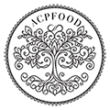
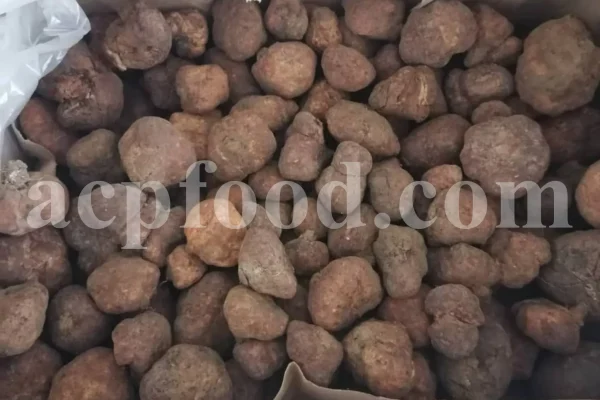
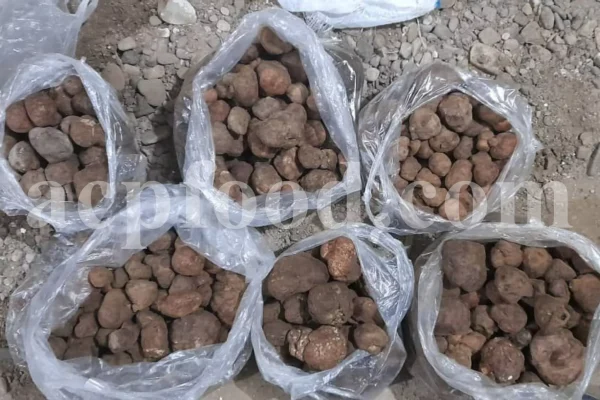
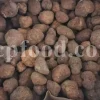
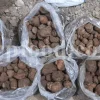
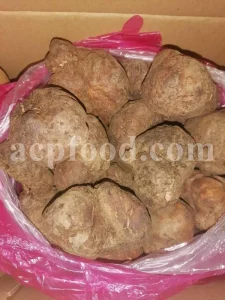
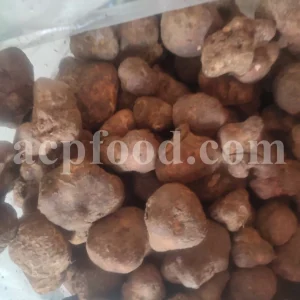
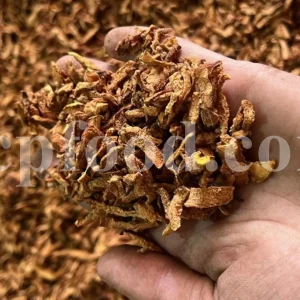
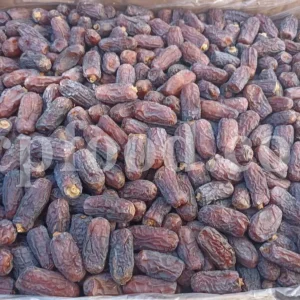
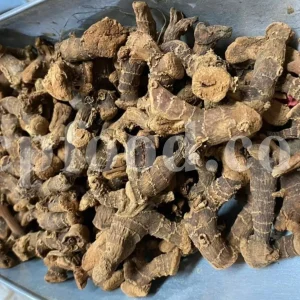

Reviews
There are no reviews yet.